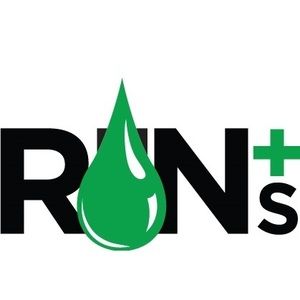EPA: 1.52 billion RINs generated in February

March 20, 2025
BY Erin Voegele
Nearly 1.52 billion renewable identification numbers (RINs) were generated under the Renewable Fuel Standard in February, down more than 25% when compared to the 2.04 billion that were generated during the same month of last year, according to data released by the U.S. EPA on March 20. Total RIN generation for the first two months of 2025 reached 3.35 billion, down 15% from the 3.95 billion that were generated during the same period of 2024.
More than 7.47 million D3 cellulosic biofuel RINs were generated in February, including 6.28 million generated for cellulosic ethanol by domestic producers and 1.91 million generated for renewable natural gas (RNG) by domestic producers. When compared to February 2024, D3 RIN generation was down 89%.
Total D3 RIN generation for the first two months of the year reached 88.28 million. That volume includes 72.17 million generated for RNG by domestic producers, 13.61 million generated for cellulosic ethanol by domestic producers, 1.33 million generated for RNG by importers, and 1.17 million generated for compressed RNG by domestic producers.
Advertisement
Approximately 375.62 million D4 biomass-based diesel RINs were generated in February, including 249.98 million generated for nonester renewable diesel by domestic producers, 109.95 million generated for biodiesel by domestic producers, 9.61 million generated for biodiesel by importers, and 6.07 million generated for renewable jet fuel by domestic producers. When compared to February 2024, D4 RIN generation was down 50%.
Total D4 RIN generation for the first two months of 2025 reached 861.69 million. That volume includes 606.7 million generated for nonester renewable diesel by domestic producers, 208.41 million generated for biodiesel by domestic producers, 14.32 million generated for biodiesel by importers, 19.64 million generated for renewable jet fuel by domestic producers, and 12.64 million generated for renewable jet fuel by foreign entities.
Nearly 15.22 million D5 advanced biofuel RINs were generated in February, including 9.56 million generated for naphtha by domestic producers, 3.4 million generated for nonester renewable diesel by domestic producers, 2.1 million generated for ethanol by domestic producers, 112,984 generated for renewable heating oil by domestic producers, and 44,552 generated for compressed RNG by domestic producers. When compared to February 2024, D5 RIN generation was down 7%.
Total D5 RIN generation for the first two months of the year reached 38.6 million. That volume includes 21.04 million generated for naphtha by domestic producers, 12.6 million generated for nonester renewable diesel by domestic producers, 4.42 million generated for ethanol by domestic producers, 450,751 generated for renewable heating oil by domestic producers, 65,302 generated for compressed RNG by domestic producers, and 21,107 generated for RNG by domestic producers.
Advertisement
Moe than 1.12 billion D6 renewable fuel RINs were generated in February, nearly all for ethanol by domestic producers. Approximately 1.04 million D6 RINs were generated for ethanol by importers and 153,911 were generated for biodiesel by domestic producers. When compared to February 2024, D6 RIN generation was down 7%.
Total D6 RIN generation for the first two months of 2025 reached 2.37 billion. That volume includes 2.36 billion generated for ethanol by domestic producers, 2.31 million generated for ethanol by importers, and 153,911 generated for biodiesel by domestic producers.
No D7 cellulosic diesel RINs were generated in February. Total D7 RIN generation for the first two months of the year reached 28,782, all of which were generated for cellulosic heating oil by importers.
Related Stories
The U.S. Energy Information Administration maintained its forecast for 2025 and 2026 biodiesel, renewable diesel and sustainable aviation fuel (SAF) production in its latest Short-Term Energy Outlook, released July 8.
XCF Global Inc. on July 10 shared its strategic plan to invest close to $1 billion in developing a network of SAF production facilities, expanding its U.S. footprint, and advancing its international growth strategy.
U.S. fuel ethanol capacity fell slightly in April, while biodiesel and renewable diesel capacity held steady, according to data released by the U.S. EIA on June 30. Feedstock consumption was down when compared to the previous month.
XCF Global Inc. on July 8 provided a production update on its flagship New Rise Reno facility, underscoring that the plant has successfully produced SAF, renewable diesel, and renewable naphtha during its initial ramp-up.
The U.S. EPA on July 8 hosted virtual public hearing to gather input on the agency’s recently released proposed rule to set 2026 and 2027 RFS RVOs. Members of the biofuel industry were among those to offer testimony during the event.
Upcoming Events










